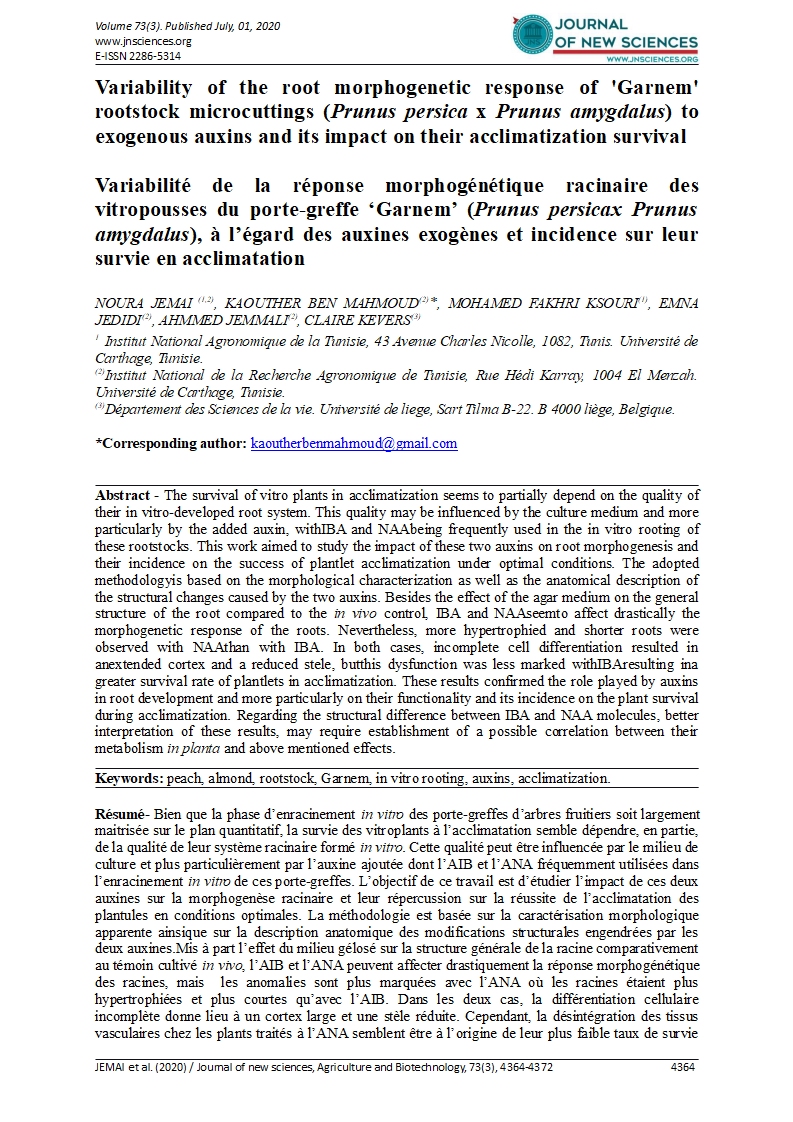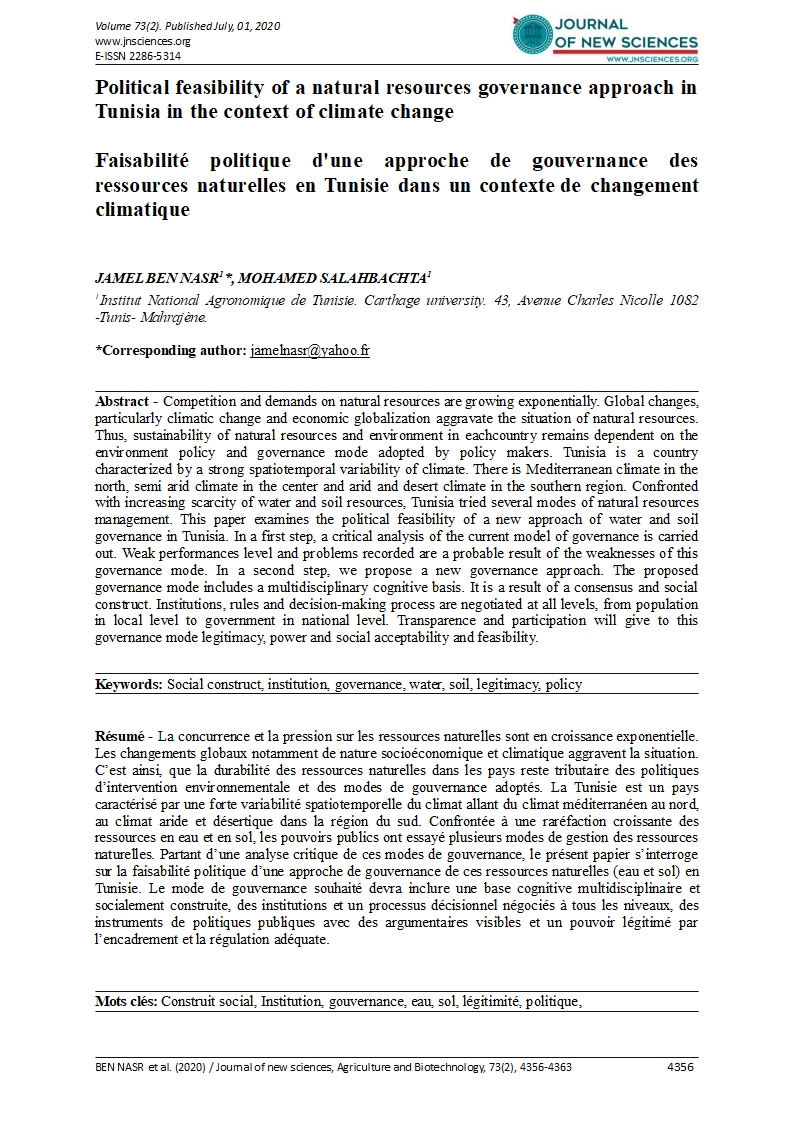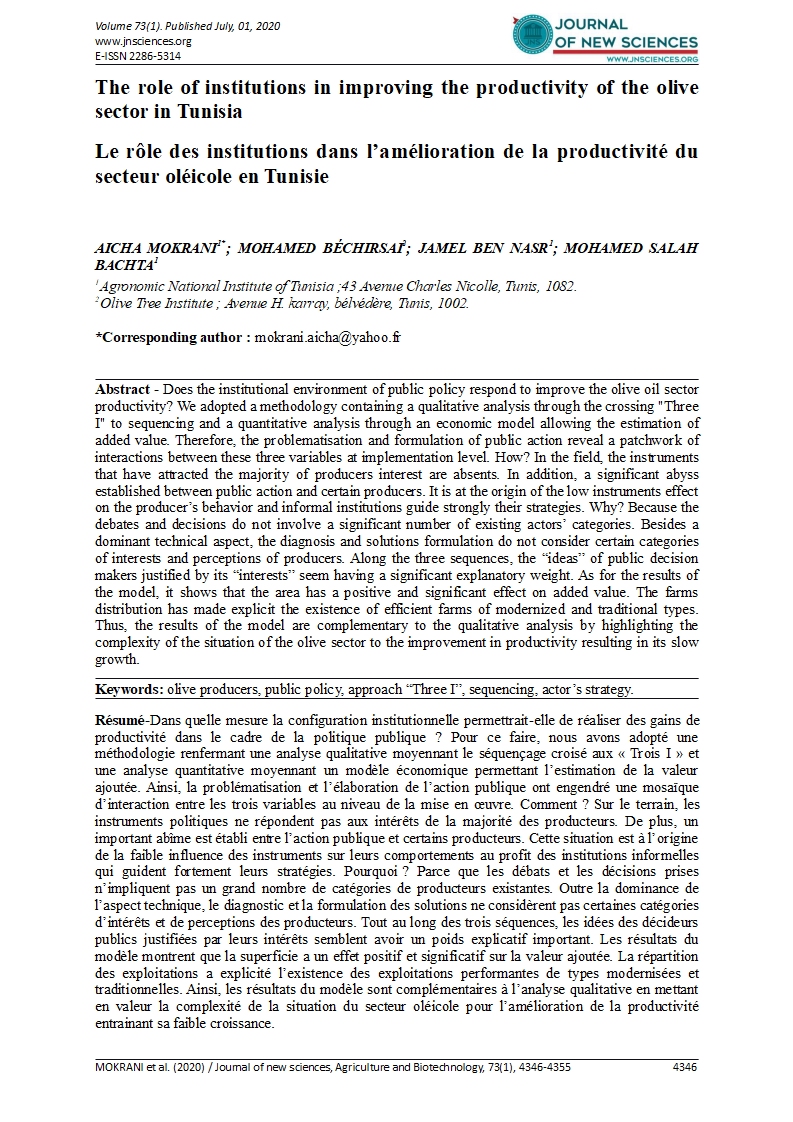- Category: Volume 73
- Hits: 2907
Variability of the root morphogenetic response of 'Garnem' rootstock microcuttings (Prunus persica x Prunus amygdalus) to exogenous auxins and its impact on their acclimatization survival

Variabilité de la réponse morphogénétique racinaire des vitropousses du porte-greffe ‘Garnem’ (Prunus persicax Prunus amygdalus), à l’égard des auxines exogènes et incidence sur leur survie en acclimatation
NOURA JEMAI (1,2)
KAOUTHER BEN MAHMOUD(2)
MOHAMED FAKHRI KSOURI(1)
EMNA JEDIDI(2)
AHMMED JEMMALI(2)
CLAIRE KEVERS(3)
1 Institut National Agronomique de la Tunisie, 43 Avenue Charles Nicolle, 1082, Tunis. Université de Carthage, Tunisie.
(2)Institut National de la Recherche Agronomique de Tunisie, Rue Hédi Karray, 1004 El Menzah. Université de Carthage, Tunisie.
(3)Département des Sciences de la vie. Université de liege, Sart Tilma B-22. B 4000 liège, Belgique.
Abstract - The survival of vitro plants in acclimatization seems to partially depend on the quality of their in vitro-developed root system. This quality may be influenced by the culture medium and more particularly by the added auxin, withIBA and NAAbeing frequently used in the in vitro rooting of these rootstocks. This work aimed to study the impact of these two auxins on root morphogenesis and their incidence on the success of plantlet acclimatization under optimal conditions. The adopted methodologyis based on the morphological characterization as well as the anatomical description of the structural changes caused by the two auxins. Besides the effect of the agar medium on the general structure of the root compared to the in vivo control, IBA and NAAseemto affect drastically the morphogenetic response of the roots. Nevertheless, more hypertrophied and shorter roots were observed with NAAthan with IBA. In both cases, incomplete cell differentiation resulted in anextended cortex and a reduced stele, butthis dysfunction was less marked withIBAresulting ina greater survival rate of plantlets in acclimatization. These results confirmed the role played by auxins in root development and more particularly on their functionality and its incidence on the plant survival during acclimatization. Regarding the structural difference between IBA and NAA molecules, better interpretation of these results, may require establishment of a possible correlation between their metabolism in planta and above mentioned effects.
Keywords: peach, almond, rootstock, Garnem, in vitro rooting, auxins, acclimatization.


